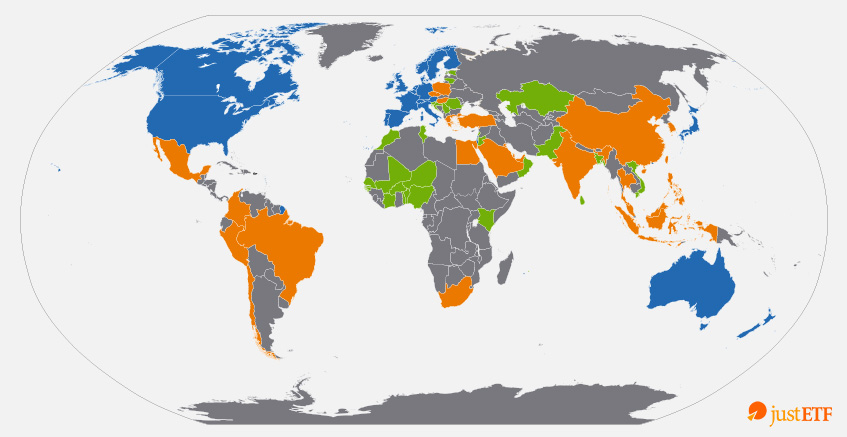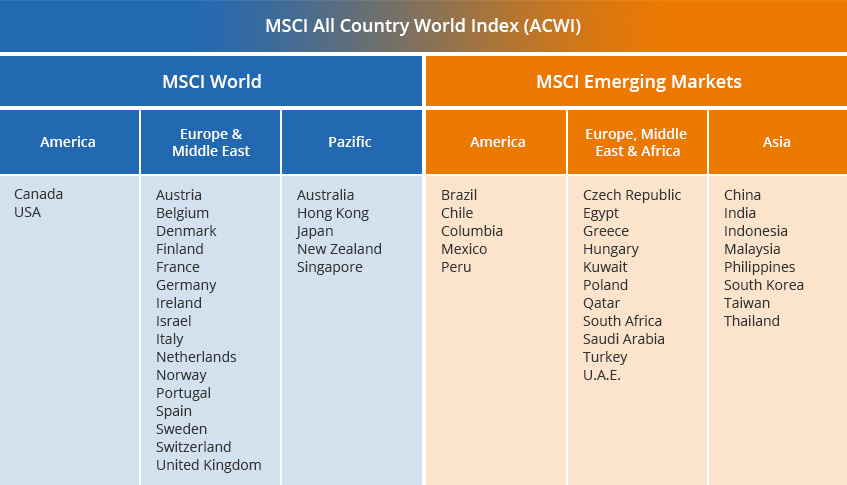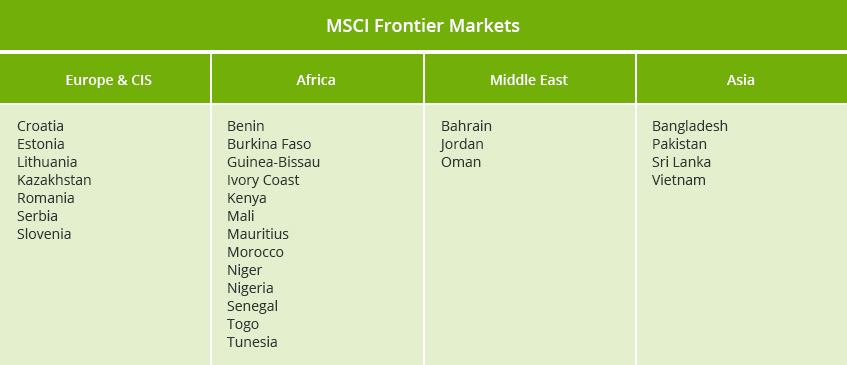
MSCI is one of the world’s leading independent providers of indices. The vast majority of
ETFs available to UK investors track either an MSCI benchmark or one provided by their big rivals
FTSE, STOXX or S&P. When you buy an ETF, it’s important to understand how its
index works as that is the main driver of performance. What’s less well known is that each index company divides up the world’s markets in different ways. So how do MSCI’s indices work?
What you can expect in this article
How do MSCI’s indices work?
MSCI takes a Russian doll approach to the world’s stock markets. The mother of all equity indices is the
MSCI ACWI (All-Country World index) which encompasses most of the globe. Nesting within that index are various sub-indices that divide up the world into smaller pieces.
You could buy one ETF that tracks the MSCI ACWI and you’d instantly own a highly diversified portfolio. Or, you can use the smaller indices as building blocks to create your custom view of the world.
The MSCI ACWI index covers 85% of the global market capitalisation. It tracks about 3,000 large and mid cap enterprises in 23 Developed Markets and 24
Emerging Markets. However, the share of Emerging Markets in the ACWI is only around 11%, although these countries account for around 40% of the world's gross domestic product (GDP).
Allocation of the world regions and countries in the MSCI indices
![Allocation of the world regions and countries in the MSCI indices]()
Industrieländer Schwellenländer Frontier Markets
Source: MSCI; as of 30/04/2022
Many investors use GDP as a measure of the economic importance of the world’s markets which is why you may well prefer to build a portfolio based on some of MSCI’s regional or country indices.
MSCI’s World index covers the developed world’s stocks while excluding Emerging Markets. The developed world means the US and Canada, Western Europe including the UK but not Greece, the ANZACs, Japan, Hong Kong and Singapore in the Pacific plus Israel from the Middle East.
The market cap bias
It’s worth mentioning that the most well-known MSCI indices are based on a stock’s free float-adjusted market capitalisation. What does that mean? Free float refers to the amount of company stock that is readily available in the public markets. In other words, it excludes shares that are privately held by the likes of company executives, backers or government interests.
Additionally, a market cap index weights individual companies according to their market price multiplied by the number of (free float) shares. So if a large company is worth 10% of the entire index by market cap, it will account for a 10% portion of the index. If the company’s value doubles then the company will now constitute 20% of the index (assuming all other stocks in the index were static). Some indices limit the maximum weight that individual companies may account for in the index to avoid excessive concentration.
The US account for the majority of the MSCI world indices
You can see the concentration-effect in action at a country level by looking at the weight of the US in world indices. The US market is worth over 61% of the MSCI ACWI and over 68% of the MSCI World index. This degree of domination is another reason why many investors like to fine-tune their portfolios with regional and country-specific ETFs.
One of the most important diversifying regional benchmarks is the
MSCI Emerging Markets index. It contains many Asian states like China, South Korea, India and Taiwan. Markets from South America like Brazil, from Eastern Europe like Poland or from the Middle East like Saudi Arabia are parts of the MSCI Emerging Markets as well.
Developed and Emerging Markets by MSCI classification
![Developed and Emerging Markets by MSCI classification]()
Source: MSCI; as of 30/04/2022
Classification matters
But beware: There can be differences between the various index providers concerning the classification of individual countries. For example, with about 13% South Korea is one of the most heavily weighted countries in the MSCI Emerging Markets. On the other hand, the index provider FTSE assigns it to the developed countries. Similarly, Poland is classified as an Emerging Market country by MSCI but as a developed country by FTSE.
Also, individual countries may be upgraded or downgraded. For example, Kuwait was upgraded from a so-called "Frontier Market" to an Emerging Market by MSCI in December 2020. The most prominent example was, of course, the exclusion of Russia from all emerging markets indices in 2022.
The Frontier Markets are the lowest category of the MSCI regional index classes. MSCI includes 28 countries among the Frontier Markets, 26 of which are represented in the MSCI Frontier Markets index, e. g. Serbia, Nigeria, Vietnam or Bahrain.
Frontier Markets according to MSCI classification
![Frontier Markets according to MSCI classification]()
Source: MSCI; as of 30/04/2022
Slice the MSCI World by market cap
The indices discussed above cover large and mid cap companies in their constituent markets. Large cap firms in the MSCI universe account for 65 - 75% of the total capitalisation of any given market. Mid cap firms form the next layer of the index. Large and medium-sized companies together comprise 80 - 90% of MSCI indices.
To get the 10 - 20%
small cap slice on top of mid and large caps, look out for MSCI’s investable market indices (IMI). In addition to the large and medium-sized companies, these also include the smaller ones. The IMI indices thus offer you a market coverage of about 99%.
MSCI index world by market cap
![MSCI index world by market cap]()
Source: MSCI; as of 30/04/2022
A good example of an investable market index is the
MSCI ACWI IMI. This index features almost 9,000 stocks spread across 47 countries and is one of the most diversified indices you can invest in via ETF. However, an ETF doesn’t have to hold the same stocks as its index, so check the provider’s website to ensure you understand any differences.
Excursus: ETFs usually replicate very large indices via sampling
So for this huge number of stocks, it would be just too complicated and very expensive. Therefore, such large indices like the MSCI ACWI IMI are usually replicated by
sampling. This means the provider selects the most important and most liquid stocks in the index, representing the index performance.
You can also invest in individual countries using ETFs on MSCI indices. Many investors do this when they want to overweight a particular country in their portfolio. For example, China constitutes about 3% of an MSCI ACWI ETF. But you could tilt your portfolio towards China by adding an ETF on the
MSCI China.
However, if you decide to diversify, remember to check the factsheet for both the index and the ETF so you fully understand the role they will play in your portfolio.
ETFs on MSCI indices can be found via the corresponding filter in the
ETF search. You can then narrow down the selection further using various filter criteria. Or directly select the desired index in the index select box.
Investment guides for the most popular MSCI indices are also available:




